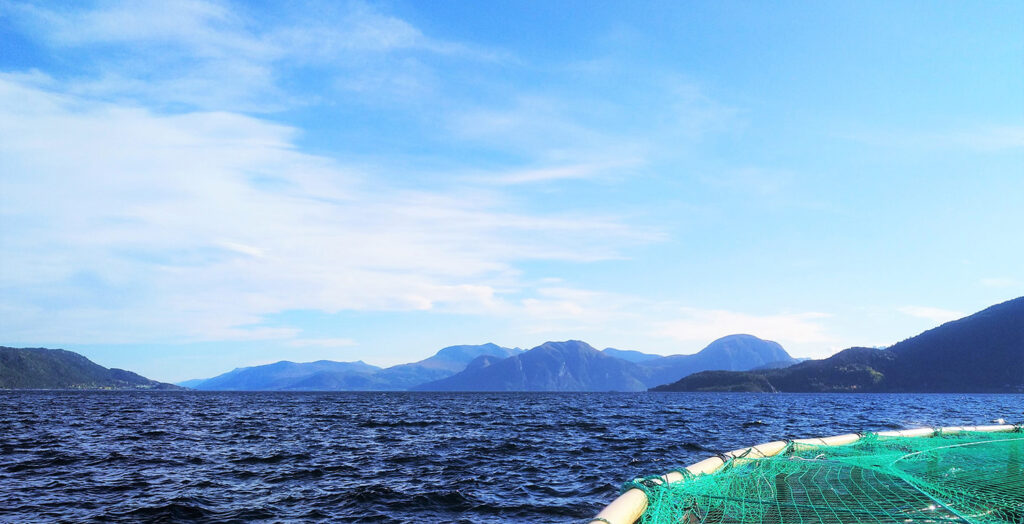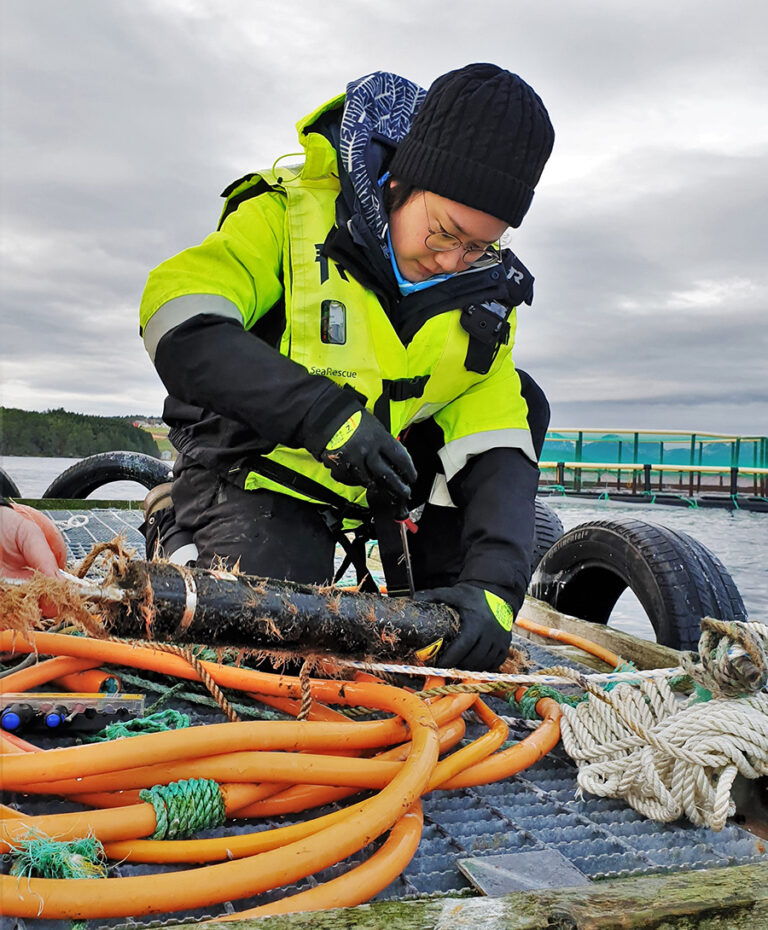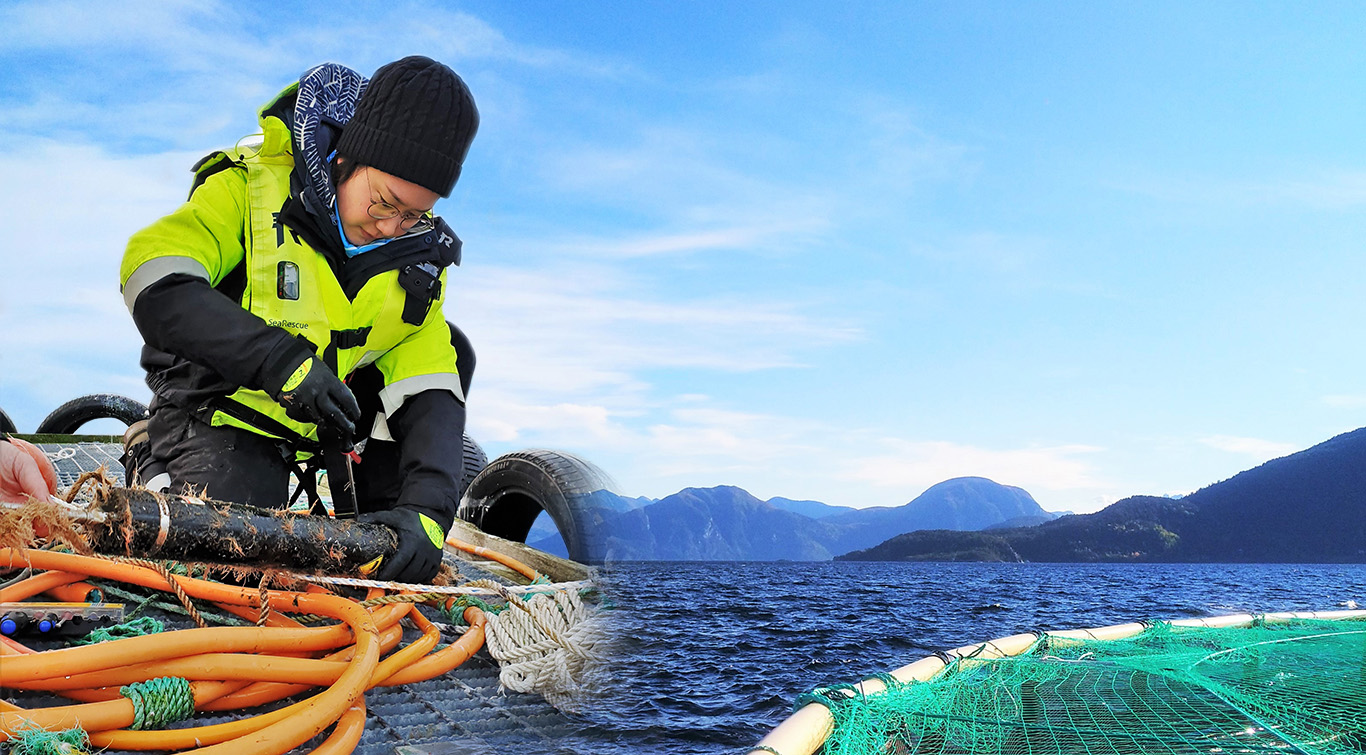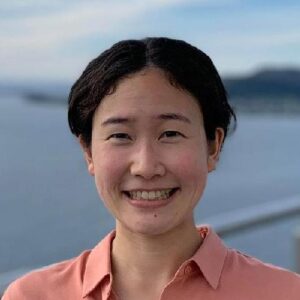Environmental factors include both biotic (e.g. wild fish around sea cages, salmon lice, harmful algae) and abiotic (e.g. water current, light, dissolved oxygen) ones. Behaviour is one of the indicators that can be used for evaluating fish welfare. If we have a good understanding of fish behaviour at their normal state, as well as under unusual environmental conditions, we can potentially make an early detection of events that might harm fish and act for prevention. Such knowledge is also helpful to improve the design of the facilities and every-day operation at fish farms.
This will eventually bring better quality of life for fish, and economical benefit to the industry. We conduct our research at commercial-scale sea cages that have approx. 40m diameters, and 33m depths. This size scale is not so common in previous studies on salmon behaviour in aquaculture, where researchers used tanks on land, or smaller to medium size experimental sea cages. Findings from these studies are not necessarily applicable to salmon in large sea cages. Moreover, monitoring methods that worked well for observation of fish behaviour in smaller-scale settings are not always suitable for larger-scale sea cages. It is challenging to monitor salmon behaviour in massive water volume. Therefore, my research also focuses on establishing monitoring methods that can work well at large sea cages commonly used in today’s Norwegian aquaculture.
One of the environmental factors – wild fish at coastal aquaculture sites
Coastal sea cages can create huge aggregations of wild fish due to some attractants such as uneaten feed pellets drifting out from sea cages. Wild fish is one of the biological factors that might stress farmed salmon and change their behavioural patterns. To investigate the interaction between wild fish and salmon inside sea cages, we started with developing a novel monitoring method for wild fish abundance analysis at aquaculture site. In this method, we use an AI-based system that can autonomously quantify wild fish underwater. We have tested the system with images taken at an aquaculture site where NTNU has a research license.

The results showed that the AI-based system can be a good alternative to manual quantification of wild fish. We can drastically reduce human workload by using this AI-based system. This is a great advantage when we want to work with long footage. Our plan is to perform a long-term monitoring of wild fish abundance and species composition at coastal aquaculture sites, by using the developed system. From a wider perspective, such knowledge is valuable in terms of understanding impacts of sea caged aquaculture on the ecosystem. The preliminary results of this study were presented at the Aquaculture Europe virtual conference held in April 2021.

Joy and challenges of cross-disciplinary approach
At large-scale sea cages, with our eyes we can only see some salmon jumping at the water surface, or swimming in a thin upper layer of water. If we want to get a good overview of what is happening inside and around sea cages, it is essential to use various kind of equipment such as cameras, ROVs, sensors, and hydroacoustic tools. Data obtained by using such equipment can be massive and/or complex, so we need to use computer-based systems to process/visualize/analyze them. It is not always easy to understand how those equipment and systems work and make good use of them in my own projects. Sometimes I find myself struggling outside my comfort zone, but I also feel that it is exciting to step into new areas. Fortunately, it is possible to get help from my supervisors, colleagues, and project collaborators who are experts in their respective field. However, having a good, or at least a basic understanding of logic behind the tools and systems can add additional depth to my research. This is something I have learnt during the first year of my PhD. Biology is the core of my research interests, but my curiosity is growing its branches towards data science and engineering subjects as well.
My background, how I decided to come to Norway, and how it is to be here during corona times

I am originally from Japan. During the past 6 or 7 years, I have made a few rounds of migration between Japan and Norway for my studies and job in aquaculture. Last year, I decided to come back to Norway again because I was already feeling that Norway is my second home country, and the job (which I have now) and the research environment here looked extremely attractive. And my guess was correct. You can read more about my background and motivation for my research in an interview article, which was published on The Fish Site in January this year. I am very grateful to my supervisors for caring about my well-being and making sure that things are going fine with my research/studies. And I am happy to have good colleagues with whom I can talk not only about work, but also other things. Without them, doing a PhD in this strange time can be very tough.
In Ålesund area, we are experiencing more infections and thus stricter restrictions this year than in 2020. Luckily, I already had all the necessary data and materials with me during the last we-must-work-from-home periods, so I did not experience any practical difficulties. However, it is not easy to maintain mental fitness in a socially distanced environment, which I suppose many people are experiencing. It is easier to get stuck when I don’t have any face-to-face communication with my supervisors and colleagues. It feels a bit lonely when I cannot meet anyone except for fish on my computer screens. Then I often walk along the coastline or visit mountains in the neighbourhood, take in some fresh air, and clear out a fog in my head.
I also would like to mention that the pandemic situation has been an eye-opener for me. I am very thankful for still being able to work on what I love. This makes me think a lot about how I could contribute to the society. Bringing new knowledge is one of the things I can do. However, I am sometimes unsure whether I am doing things right in my research and creating useful knowledge. (Maybe my study design or research question is not good, and the outcomes aren’t very useful in commercial production? etc.). Such feeling scares me but also pushes me to stay active on learning new things and developing myself as a researcher.


